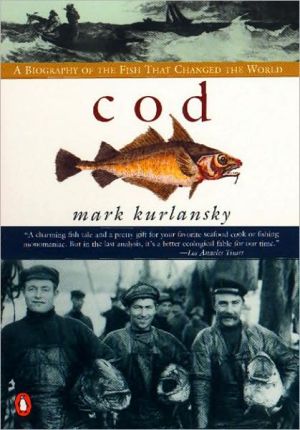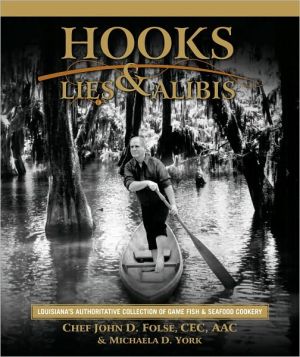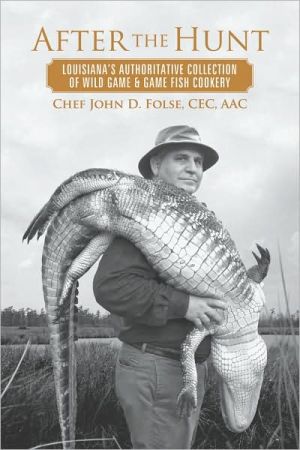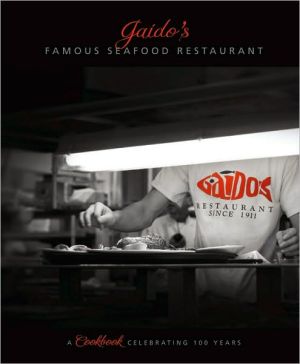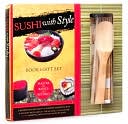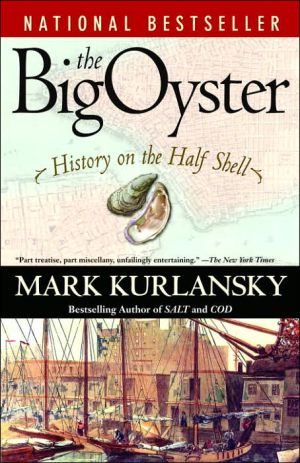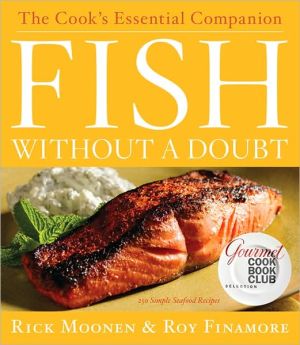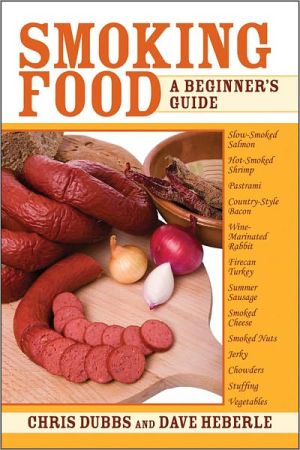Cod: A Biography of the Fish That Changed the World
From the Bestselling Author of Salt and The Basque History of the World\ \ Cod,Mark Kurlansky’s third work of nonfiction and winner of the 1999 James Beard Award, is the biography of a single species of fish, but it may as well be a world history with this humble fish as its recurring main character. Cod, it turns out, is the reason Europeans set sail across the Atlantic, and it is the only reason they could. What did the Vikings eat in icy Greenland and on the five expeditions to America...
Search in google:
"A loving eulogy not only to a fish, but to the people whose lives have been shaped by the habits of the fish, and whose way of life is now at an end."—New York "Newsday." Unabridged. 7 CDs. Publishers Weekly No fish story, this is a sapient and vivid chronology of the immense impact and influence the cod fishing industry has had on the human race. The cod fish has played a major role in the economics, sustainability and diplomacy of many countries and societies throughout history, explains Kurlansky (A Continent of Islands). Kurlansky effectively weaves philosophical thought with facts and vignettes on the history of the various cod fishing enterprises that have emerged and faded through the ages. Wars over fishing territories and rights have plagued cod fishing ever since humans took to the sea, and Kurlansky traces these hostilities through short history lessons that are easily absorbed and understood. Personal quotes and cod recipes from slaves, kings, diplomats, fisherman and noted scholars such as Thoreau and Kipling cast a glistening view of the grasp this fishing industry had on society. The book's final section, A Cook's Tale: Six Centuries of Cod Recipes describes the use and preparation of cod from the days of the Vikings through the 1900s. Complete with a detailed bibliography, this remarkable and informative volume should net any number of happy readers.
1: The Race to Codlandia\ He said it must be Friday, the day he could not sell anything except servings of a fish known in Castile as pollock or in Andalusia as salt cod.\ —Miguel de Cervantes,\ Don Quixote, 1605-1616\ A medieval fisherman is said to have hauled up a three-foot-long cod, which was common enough at the time. And the fact that the cod could talk was not especially surprising. But what was astonishing was that it spoke an unknown language. It spoke Basque.\ This Basque folktale shows not only the Basque attachment to their orphan language, indecipherable to the rest of the world, but also their tie to the Atlantic cod, Gadus morhua, a fish that has never been found in Basque or even Spanish waters.\ The Basques are enigmatic. They have lived in what is now the northwest corner of Spain and a nick of the French southwest for longer than history records, and not only is the origin of their language unknown, but the origin of the people themselves remains a mystery also. According to one theory, these rosy-cheeked, dark-haired, long-nosed people were the original Iberians, driven by invaders to this mountainous corner between the Pyrenees, the Cantabrian Sierra, and the Bay of Biscay. Or they may be indigenous to this area.\ They graze sheep on impossibly steep, green slopes of mountains that are thrilling in their rare, rugged beauty. They sing their own songs and write their own literature in their own language, Euskera. Possibly Europe's oldest living language, Euskera is one of only four European languages—along with Estonian, Finnish, and Hungarian—not in the Indo-European family. They also have their own sports, most notably jai alai, and even their own hat, the Basque beret, which is bigger than any other beret.\ Though their lands currently reside in three provinces of France and four of Spain, Basques have always insisted that they have a country, and they call it Euskadi. All the powerful peoples around them—the Celts and Romans, the royal houses of Aquitaine, Navarra, Aragon, and Castile; later Spanish and French monarchies, dictatorships, and republics—have tried to subdue and assimilate them, and all have failed. In the 1960s, at a time when their ancient language was only whispered, having been outlawed by the dictator Francisco Franco, they secretly modernized it to broaden its usage, and today, with only 800,000 Basque speakers in the world, almost 1,000 titles a year are published in Euskera, nearly a third by Basque writers and the rest translations.\ "Nire aitaren etxea / defendituko dut. / Otsoen kontra" (I will defend / the house of my father. / Against the wolves) are the opening lines of a famous poem in modern Euskera by Gabriel Aresti, one of the fathers of the modernized tongue. Basques have been able to maintain this stubborn independence, despite repression and wars, because they have managed to preserve a strong economy throughout the centuries. Not only are Basques shepherds, but they are also a seafaring people, noted for their successes in commerce. During the Middle Ages, when Europeans ate great quantities of whale meat, the Basques traveled to distant unknown waters and brought back whale. They were able to travel such distances because they had found huge schools of cod and salted their catch, giving them a nutritious food supply that would not spoil on long voyages.\ Basques were not the first to cure cod. Centuries earlier, the Vikings had traveled from Norway to Iceland to Greenland to Canada, and it is not a coincidence that this is the exact range of the Atlantic cod. In the tenth century, Thorwald and his wayward son, Eirik the Red, having been thrown out of Norway for murder, traveled to Iceland, where they killed more people and were again expelled. About the year 985, they put to sea from the black lava shore of Iceland with a small crew on a little open ship. Even in midsummer, when the days are almost without nightfall, the sea there is gray and kicks up whitecaps. But with sails and oars, the small band made it to a land of glaciers and rocks, where the water was treacherous with icebergs that glowed robin's-egg blue. In the spring and summer, chunks broke off the glaciers, crashed into the sea with a sound like thunder that echoed in the fiords, and sent out huge waves. Eirik, hoping to colonize this land, tried to enhance its appeal by naming it Greenland.\ Almost 1,000 years later, New England whalers would sing: "Oh, Greenland is a barren place / a place that bears no green / Where there's ice and snow / and the whale fishes blow / But daylight's seldom seen."\ Eirik colonized this inhospitable land and then tried to push on to new discoveries. But he injured his foot and had to be left behind. His son, Leifur, later known as Leif Eiriksson, sailed on to a place he called Stoneland, which was probably the rocky, barren Labrador coast. "I saw not one cartload of earth, though I landed many places," Jacques Cartier would write of this coast six centuries later. From there, Leif's men turned south to "Woodland" and then "Vineland." The identity of these places is not certain. Woodland could have been Newfoundland, Nova Scotia, or Maine, all three of which are wooded. But in Vineland they found wild grapes, which no one else has discovered in any of these places.\ The remains of a Viking camp have been found in Newfoundland. It is perhaps in that gentler land that the Vikings were greeted by inhabitants they found so violent and hostile that they deemed settlement impossible, a striking assessment to come from a people who had been regularly banished for the habit of murdering people. More than 500 years later the Beothuk tribe of Newfoundland would prevent John Cabot from exploring beyond crossbow range of his ship. The Beothuk apparently did not misjudge Europeans, since soon after Cabot, they were enslaved by the Portuguese, driven inland, hunted by the French and English, and exterminated in a matter of decades.\ How did the Vikings survive in greenless Greenland and earthless Stoneland? How did they have enough provisions to push on to Woodland and Vineland, where they dared not go inland to gather food, and yet they still had enough food to get back? What did these Norsemen eat on the five expeditions to America between 985 and 1011 that have been recorded in the Icelandic sagas? They were able to travel to all these distant, barren shores because they had learned to preserve codfish by hanging it in the frosty winter air until it lost four-fifths of its weight and became a durable woodlike plank. They could break off pieces and chew them, eating it like hardtack. Even earlier than Eirik's day, in the ninth century, Norsemen had already established plants for processing dried cod in Iceland and Norway and were trading the surplus in northern Europe.\ The Basques, unlike the Vikings, had salt, and because fish that was salted before drying lasted longer, the Basques could travel even farther than the Vikings. They had another advantage: The more durable a product, the easier it is to trade. By the year 1000, the Basques had greatly expanded the cod markets to a truly international trade that reached far from the cod's northern habitat.\ In the Mediterranean world, where there were not only salt deposits but a strong enough sun to dry sea salt, salting to preserve food was not a new idea. In preclassical times, Egyptians and Romans had salted fish and developed a thriving trade. Salted meats were popular, and Roman Gaul had been famous for salted and smoked hams. Before they turned to cod, the Basques had sometimes salted whale meat; salt whale was found to be good with peas, and the most prized part of the whale, the tongue, was also often salted.\ Until the twentieth-century refrigerator, spoiled food had been a chronic curse and severely limited trade in many products, especially fish. When the Basque whalers applied to cod the salting techniques they were using on whale, they discovered a particularly good marriage because the cod is virtually without fat, and so if salted and dried well, would rarely spoil. It would outlast whale, which is red meat, and it would outlast herring, a fatty fish that became a popular salted item of the northern countries in the Middle Ages.\ Even dried salted cod will turn if kept long enough in hot humid weather. But for the Middle Ages it was remarkably long-lasting—a miracle comparable to the discovery of the fast-freezing process in the twentieth century, which also debuted with cod. Not only did cod last longer than other salted fish, but it tasted better too. Once dried or salted—or both—and then properly restored through soaking, this fish presents a flaky flesh that to many tastes, even in the modern age of refrigeration, is far superior to the bland white meat of fresh cod. For the poor who could rarely afford fresh fish, it was cheap, high-quality nutrition.\ Catholicism gave the Basques their great opportunity. The medieval church imposed fast days on which sexual intercourse and the eating of flesh were forbidden, but eating "cold" foods was permitted. Because fish came from water, it was deemed cold, as were waterfowl and whale, but meat was considered hot food. The Basques were already selling whale meat to Catholics on "lean days," which, since Friday was the day of Christ's crucifixion, included all Fridays, the forty days of Lent, and various other days of note on the religious calendar. In total, meat was forbidden for almost half the days of the year, and those lean days eventually became salt cod days. Cod became almost a religious icon—a mythological crusader for Christian observance.\ The Basques were getting richer every Friday. But where was all this cod coming from? The Basques, who had never even said where they came from, kept their secret. By the fifteenth century, this was no longer easy to do, because cod had become widely recognized as a highly profitable commodity and commercial interests around Europe were looking for new cod grounds. There were cod off of Iceland and in the North Sea, but the Scandinavians, who had been fishing cod in those waters for thousands of years, had not seen the Basques. The British, who had been fishing for cod well offshore since Roman times, did not run across Basque fishermen even in the fourteenth century, when British fishermen began venturing up to Icelandic waters. The Bretons, who tried to follow the Basques, began talking of a land across the sea.\ In the 1480s, a conflict was brewing between Bristol merchants and the Hanseatic League. The league had been formed in thirteenth-century Lubeck to regulate trade and stand up for the interests of the merchant class in northern German towns. Hanse means "fellowship" in Middle High German. This fellowship organized town by town and spread throughout northern Europe, including London. By controlling the mouths of all the major rivers that ran north from central Europe, from the Rhine to the Vistula, the league was able to control much of European trade and especially Baltic trade. By the fourteenth century, it had chapters as far north as Iceland, as far east as Riga, south to the Ukraine, and west to Venice.\ For many years, the league was seen as a positive force in northern Europe. It stood up against the abuses of monarchs, stopped piracy, dredged channels, and built lighthouses. In England, league members were called Easterlings because they came from the east, and their good reputation is reflected in the word sterling, which comes from Easterling and means "of assured value."\ But the league grew increasingly abusive of its power and ruthless in defense of trade monopolies. In 1381, mobs rose up in England and hunted down Hanseatics, killing anyone who could not say bread and cheese with an English accent.\ The Hanseatics monopolized the Baltic herring trade and in the fifteenth century attempted to do the same with dried cod. By then, dried cod had become an important product in Bristol. Bristol's well-protected but difficult-to-navigate harbor had greatly expanded as a trade center because of its location between Iceland and the Mediterranean. It had become a leading port for dried cod from Iceland and wine, especially sherry, from Spain. But in 1475, the Hanseatic League cut off Bristol merchants from buying Icelandic cod.\ Thomas Croft, a wealthy Bristol customs official, trying to find a new source of cod, went into partnership with John Jay, a Bristol merchant who had what was at the time a Bristol obsession: He believed that somewhere in the Atlantic was an island called Hy-Brasil. In 1480, Jay sent his first ship in search of this island, which he hoped would offer a new fishing base for cod. In 1481, Jay and Croft outfitted two more ships, the Trinity and the George. No record exists of the result of this enterprise. Croft and Jay were as silent as the Basques. They made no announcement of the discovery of Hy-Brasil, and history has written off the voyage as a failure. But they did find enough cod so that in 1490, when the Hanseatic League offered to negotiate to reopen the Iceland trade, Croft and Jay simply weren't interested anymore.\ Where was their cod coming from? It arrived in Bristol dried, and drying cannot be done on a ship deck. Since their ships sailed out of the Bristol Channel and traveled far west of Ireland and there was no land for drying fish west of Ireland—Jay had still not found Hy-Brasil—it was suppposed that Croft and Jay were buying the fish somewhere. Since it was illegal for a customs official to engage in foreign trade, Croft was prosecuted. Claiming that he had gotten the cod far out in the Atlantic, he was acquitted without any secrets being revealed.\ To the glee of the British press, a letter has recently been discovered. The letter had been sent to Christopher Columbus, a decade after the Croft affair in Bristol, while Columbus was taking bows for his discovery of America. The letter, from Bristol merchants, alleged that he knew perfectly well that they had been to America already. It is not known if Columbus ever replied. He didn't need to. Fishermen were keeping their secrets, while explorers were telling the world. Columbus had claimed the entire new world for Spain.\ Then, in 1497, five years after Columbus first stumbled across the Caribbean while searching for a westward route to the spice-producing lands of Asia, Giovanni Caboto sailed from Bristol, not in search of the Bristol secret but in the hopes of finding the route to Asia that Columbus had missed. Caboto was a Genovese who is remembered by the English name John Cabot, because he undertook this voyage for Henry VII of England. The English, being in the North, were far from the spice route and so paid exceptionally high prices for spices. Cabot reasoned correctly that the British Crown and the Bristol merchants would be willing to finance a search for a northern spice route. In June, after only thirty-five days at sea, Cabot found land, though it wasn't Asia. It was a vast, rocky coastline that was ideal for salting and drying fish, by a sea that was teeming with cod. Cabot reported on the cod as evidence of the wealth of this new land, New Found Land, which he claimed for England. Thirty-seven years later, Jacques Cartier arrived, was credited with "discovering" the mouth of the St. Lawrence, planted a cross on the Gaspe Peninsula, and claimed it all for France. He also noted the presence of 1,000 Basque fishing vessels. But the Basques, wanting to keep a good secret, had never claimed it for anyone.\ The codfish lays a thousand eggs The homely hen lays one.\ The codfish never cackles To tell you what she's done.\ And so we scorn the codfish While the humble hen we prize Which only goes to show you That it pays to advertise.\ —anonymous American rhyme\
Prologue: Sentry on the Headlands (So Close to Ireland)..............1PART ONE: A FISH TALE PART TWO: LIMITS PART THREE: THE LAST HUNTERS A COOK'S TALE: SIX CENTURIES OF COD RECIPES........................235 Bibliography.......................................................277 Acknowledgments....................................................283 Index..............................................................284
\ From Barnes & NobleThe Barnes & Noble Review\ In New England folklore, cod was the fish that Christ multiplied to feed the masses. Satan tried to do the same thing, but since his hands were burning hot, the fish wriggled away. The burn mark of Satan's thumb and forefinger left black stripes; hence the cod's differently striped and poorly regarded relative, the haddock. \ How influential has the codfish been in the world's history? Wars have been fought over it, entire regional diets have been founded on it, the settlement of North America was based on it — and just recently a war nearly broke out on the high seas over it. Who knew? In Mark Kurlansky's fascinating book Cod: A Biography of the Fish That Changed the World, the author offers a fascinating new perspective on world history.\ Cod — winner of the 1998 James Beard Award for Writing on Food — traces the fish's thousand-year history across four continents. Kurlansky begins with present-day Newfoundland, where trouble has been abundant as a fishing crisis has stripped fishermen of their occupations and identity. He then examines the far reaches of cod's history with the Vikings, who pursued the fish across the Atlantic, and the Pilgrims, who set sail for the New World to pursue freedom of religion and to live on fishing — with neither the skills nor the equipment to do so.\ Kurlansky introduces readers to some key historical figures in the history of this fish that changed the world. There is Bartholomew Gosnold, who named Cape Cod in 1602. Clarence Birdseye founded the frozen cod industry in the 1930s. Andthereare the countless fishermen in towns like Gloucester, St. Malo, and Newlyn — from Nova Scotia to the coasts of England, Brazil, and West Africa — all of whose livelihoods are currently being threatened by the global ecological crisis of the codfish. Sebastian Junger, take note: What made your runaway bestseller The Perfect Storm possible? Cod — the fish that changed the world.\ \ \ \ \ \ Publishers Weekly - Publisher's Weekly\ No fish story, this is a sapient and vivid chronology of the immense impact and influence the cod fishing industry has had on the human race. The cod fish has played a major role in the economics, sustainability and diplomacy of many countries and societies throughout history, explains Kurlansky (A Continent of Islands). Kurlansky effectively weaves philosophical thought with facts and vignettes on the history of the various cod fishing enterprises that have emerged and faded through the ages. Wars over fishing territories and rights have plagued cod fishing ever since humans took to the sea, and Kurlansky traces these hostilities through short history lessons that are easily absorbed and understood. Personal quotes and cod recipes from slaves, kings, diplomats, fisherman and noted scholars such as Thoreau and Kipling cast a glistening view of the grasp this fishing industry had on society. The book's final section, A Cook's Tale: Six Centuries of Cod Recipes describes the use and preparation of cod from the days of the Vikings through the 1900s. Complete with a detailed bibliography, this remarkable and informative volume should net any number of happy readers.\ \ \ Library JournalIn this engaging history of a "1000-year fishing spree," Kurlansky (A Continent of Islands: Searching for the Caribbean Destiny, LJ 1/92) traces the relationship of cod fishery to such historical eras and events as medieval Christianity and Christian observances; international conflicts between England and Germany over Icelandic cod; slavery, the molasses trade, and the dismantling of the British Empire; and, the evolution of a sophisticated fishing industry in New England. Kurlansky relates this information in an entertaining style while providing accurate scientific information. The story does not have a happy ending, however. The cod fishery is in trouble, deep trouble, as the Atlantic fish has been fished almost to extinction. Quoting a scientist from the Woods Hole Biological Laboratory, Massachusetts, Kurlansky notes that to forecast the recovery of the cod population is to gamble: "There is only one known calculation: `When you get to zero, it will produce zero.'" Highly recommended for all general collections. \ --Mary J. Nickum\ \ \ \ \ Library JournalIn this New York Times best seller, Kurlansky gets us to look at the lowly cod in a whole new light. Search for the lucrative codfish played a key role in the development of the New World. Britain allowed the Colonies to trade with third parties-a milestone on the road to independence-due to a superabundance of cod. We also hear about the evolution of fishing technology that is so successful that cod have come close to extinction and the effect of the 200-mile limit. Moreover, the author relates marvelous Basque, French, British, and New England cod recipes from the last 500 years. Richard Davidson narrates this exceptionally informative and entertaining work.-James L. Dudley, Westhampton, NY Copyright 2002 Cahners Business Information.\ \ \ \ \ Los Angeles TimesAn elegant brief history...related with brio and wit.\ \ \ \ \ NY Public LibraryOne of the 25 best books of the year.\ \ \ \ \ Kirkus ReviewsCod—that whitest of the white-fleshed fish, prize of every fish-and-chips establishment—gets expert, loving, and encyclopedic handling from Food and Wine columnist Kurlansky (A Chosen Few: The Resurrection of European Jewry, 1994, etc.). There was one very good reason that tenth-century Vikings made it to the New World: Norway to Iceland to Greenland to Canada, they followed the exact range of the Atlantic cod. When explorers pushed off European shores in search of Eldorado, others made straight for the cod fisheries of the North Atlantic; the codfishers got by far the better results. Writing with a bright, crisp, journalistic flair, Kurlansky situates the cod in all its historic glory: the mysteries of the early Basque fisheries, the role of Catholic lean days in generating a profitable market, and the rise of the codfish aristocrats. The fish ascended from a commodity to a fetish: on coins, newspaper mastheads, tax stamps, official crests and seals. The author explains how a cod run could determine an entire regional economy and how salt cod figured in slave trading. Then came the steam engine and frozen food, changing the face of a dory-and-schooner fishing practice that hadn't seen a makeover in eons. The revolution wreaked havoc on the marketplace and just plain wrecked the bank fisheries. Territorial boundaries; the complexities of marine ecology; old, annotated recipes for preparing cod; place portraits of Gloucester, Mass., and Newlyn, England; and the current moratorium on cod fishing—Kurlansky sketches them all in his effort to compose this smart biography of the famous groundfish. Will the cod come back? Kurlansky demurs; maybe itsplace will be usurped by the ratty Arctic cod: "Nature, the ultimate pragmatist, doggedly searches for something that works. But as the cockroach demonstrates, what works best in nature does not always appeal to us."\ \
